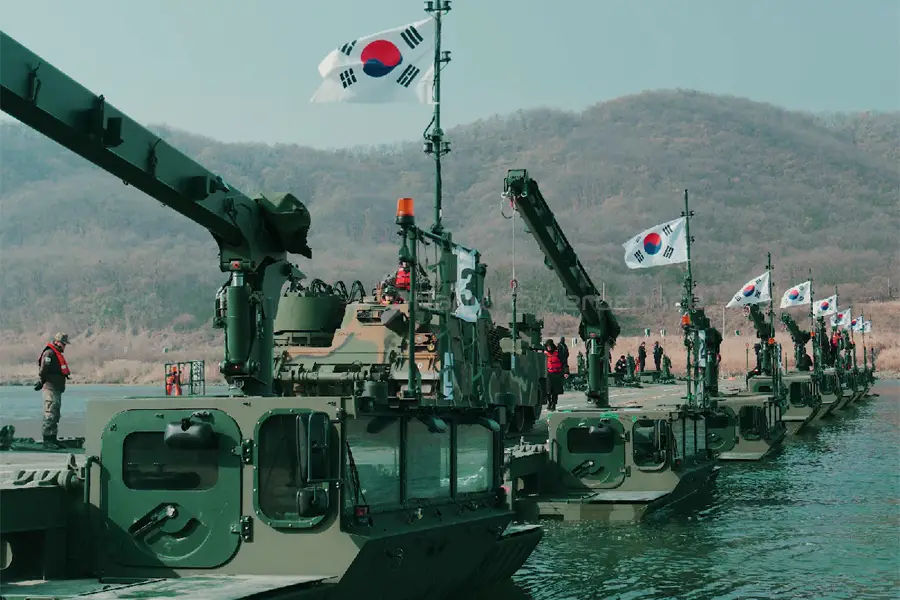South Korea’s Hanwha Aerospace has delivered the first batch of KM3 self-propelled 4×4 amphibious bridge and ferry systems to the Republic of Korea Army’s (RoKA) 7th Mobile Corps. This significant development comes as part of the Korean Amphibious Bridging Vehicle (KABV) program, in collaboration with General Dynamics European Land Systems (GDELS). On September 30, 2021, General Dynamics European Land Systems (GDELS) and Hanwha Defense announced their selection by the Republic of Korea’s Defence Acquisition Program Administration (DAPA) to jointly produce 110 amphibious bridging vehicles for the RoKA. The GDELS M3 Amphibious Bridge & Ferry System, localized to meet specific Korean requirements and designated as KM3, represents a leap in military engineering. The KM3 dramatically shortens installation times by 60–70% and reduces the number of operators by up to 80% compared to the existing ribbon pontoon bridge used by the RoKA. It can build temporary bridges to support the RoKA’s tanks, self-propelled guns, and armored vehicles across rivers and streams.

The KM3 Amphibious Rig is a versatile, self-propelled bridging vehicle capable of ferrying military vehicles across water obstacles. Initially developed by the German firm Eisenwerke Kaiserslautern (EWK, now part of GDELS), the KM3 continues the legacy of the M2 amphibious rig. The development of the M3 began in 1982, culminating in the delivery of the final prototype in 1992. By 1994, the first order of 64 serial vehicles was placed, and the M3 entered service with the German and British armies in 1996. The M3, and consequently the KM3, is a 4×4 wheeled vehicle with a maximum road speed of 80 km/h. For amphibious operations, it deploys two large aluminum pontoons along the hull for buoyancy. The vehicle is maneuvered in water by 2 fully traversable pump jets, achieving speeds up to 14 km/h. Multiple rigs can be connected using long connectors called “ramps” to form a bridge. Eight M3 Rigs can span a 100-meter water gap, supporting vehicles like the K2 Black Panther and K1A2 main battle tanks. Alternatively, two rigs can create a ferry to carry similar loads across wider water gaps.

The KM3 can operate in two modes – floating bridge and pontoon bridge. In floating bridge mode, two self-propelled units can be combined in 10 minutes to ferry tanks and self-propelled guns weighing up to 60 tons. In pontoon bridge mode, eight units can be connected in 20 minutes to form a 100-meter bridge, enabling mobile units to cross rivers efficiently. The deployment of the KM3 Amphibious Rig enhances the RoKA’s operational flexibility and rapid deployment capabilities. By significantly reducing installation times and operator requirements, the KM3 ensures that the RoKA can respond swiftly to various battlefield scenarios, improving overall tactical mobility and logistical support. The lightweight body design of the KM3 ABFS maximizes both the maneuverability on land and safety on water. Its enhanced body protection and CBR protection system improve the crew’s survivability. This modernization effort underscores South Korea’s commitment to bolstering its military engineering capabilities, ensuring readiness and resilience in the face of evolving threats.
















